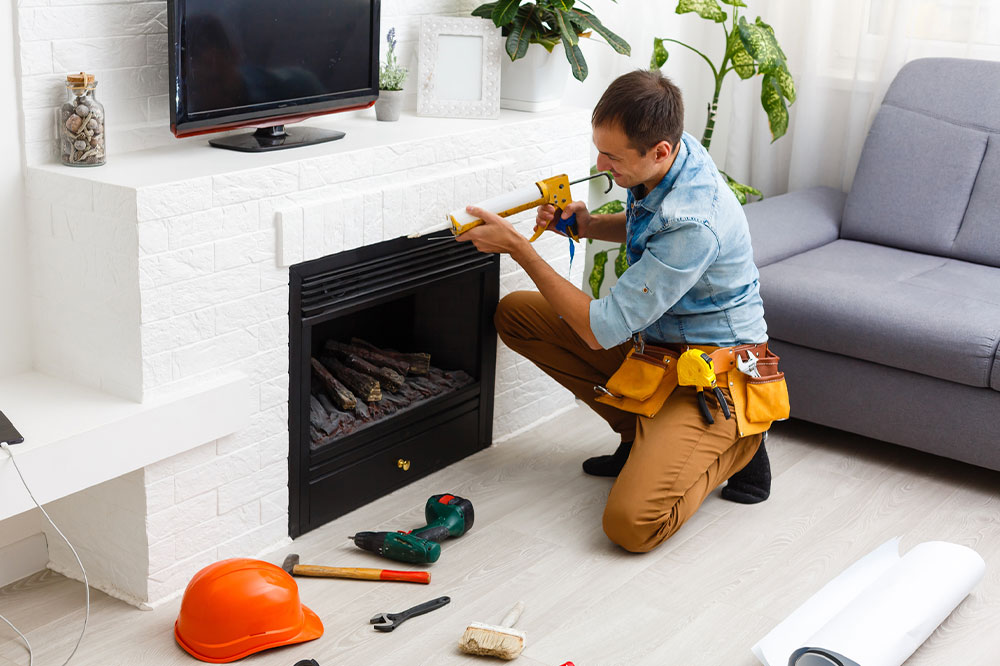
The basics about fireplace construction and maintenance
Fireplaces are combustion appliances that burn fuels for heating indoors or outdoors. In the past few decades, central heating using electric or gas furnaces are more common in households than traditional fireplaces as they are easy to use and maintain. Wooden fireplaces, though rare, add a rustic charm and a romantic vibe to your home. It can increase the value of your home by $1,000 to $12,000, depending on its location.
Different types of fireplaces
Fireplaces are categorized mainly into three types based on the fuel used. Each type is available in different modern and traditional styles, colors and materials like wood, stone, cement, metal and glass.
Wooden fireplaces
Wooden fireplaces use wood to create heat and are best suited for independent homes, villas, farmhouses and cottages. Very few households have wooden fireplaces as they contribute to pollution and are more expensive and difficult to maintain.
Gas fireplaces
Gas fireplaces work like wooden fireplaces but use gas as fuel instead of wood and are less expensive and more efficient. You must install a gas line, safety sensors and carbon monoxide detectors to detect leaks and prevent accidents.
Electric fireplaces
Electric fireplaces are like electric heaters designed to look like active fireplaces. They are easy to install as all you have to do is plug them in, and they also don’t need fuel refills, and there are no fumes. It is easy to maintain and is available in many aesthetic and stylish designs. You can install them in any part of the house, like the kitchen, living room, bedrooms, decks or patios. If you place them outdoors, they must have a protective covering from rain, storm or hail.
Steps for regular wood stove maintenance
A wooden fireplace needs proper and regular maintenance to prevent the build-up of dust, smoke, ash, dust and creosote, a highly flammable by-product generated by the combustion of wood. If left uncleaned, it can cause chimney fires. Here are the important steps you should follow for wood stove maintenance:
Clean the fireplace’s interior regularly to prevent soot and creosote build-up.
Use professional cleaning services to remove soot and creosote in the chimney that may block airflow.
Periodically check the chimney for cracks, dents and rust.
Use properly dried wood that has only about 20% moisture and use them after splitting them into logs.
Choose hardwood over softwood as they burn longer and leave less soot and creosote.
Points to consider before fireplace construction
If you have decided to install a fireplace, choose the type, design, and primary material after comparing the costs and ease of installation. You can construct a fireplace using brick, stone, wood, metal or glass, and the hearth in front of the fireplace can also be of the same material. Decide its position and size based on your room size. Mantels are another important fireplace element; decide whether you want a minimalist, grand or intricate mantel. Get an estimate from a professional and get the work done by a vendor of your choice for perfect installation. If you are building a new house, plan for a fireplace at the design stage. Installing one later can be expensive as you may have to break down walls and spend to install chimneys and pipes.
Fireplace tools and accessories that you must have at home
If you have a wooden fireplace, you need basic tools and accessories to tend and manage the fire and to pick up the logs and ashes without hurting yourself. Some accessories protect against damage from embers or hot ash flying out of the fireplace. The tools that you need for a wooden fireplace include:
Tongs
Pokers
Brushes
Shovels
Firescreens
Andirons or fire dogs that support the firewood
Fireplace rugs




